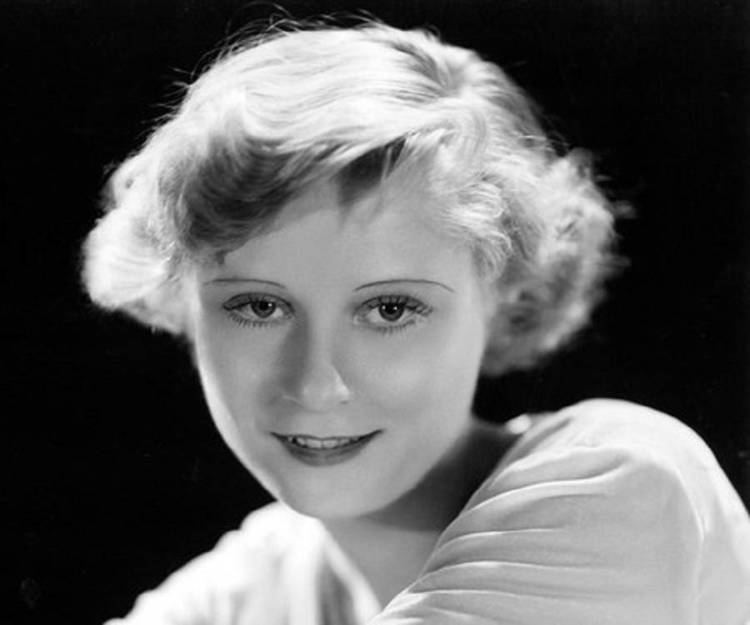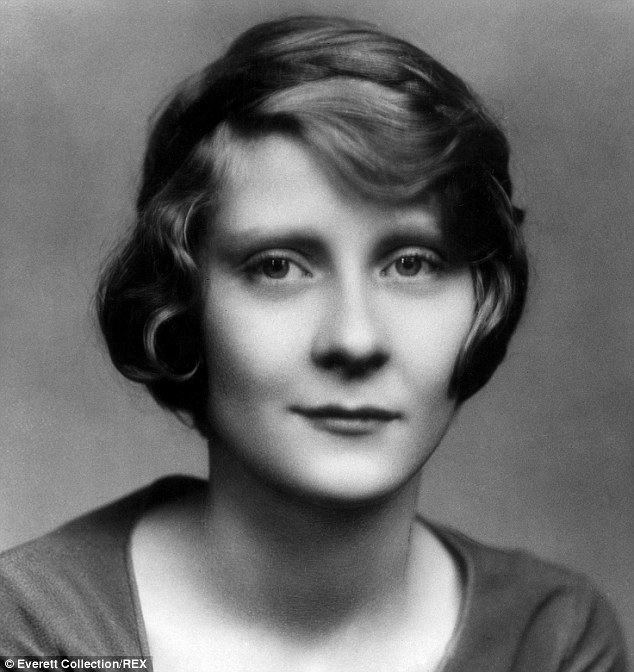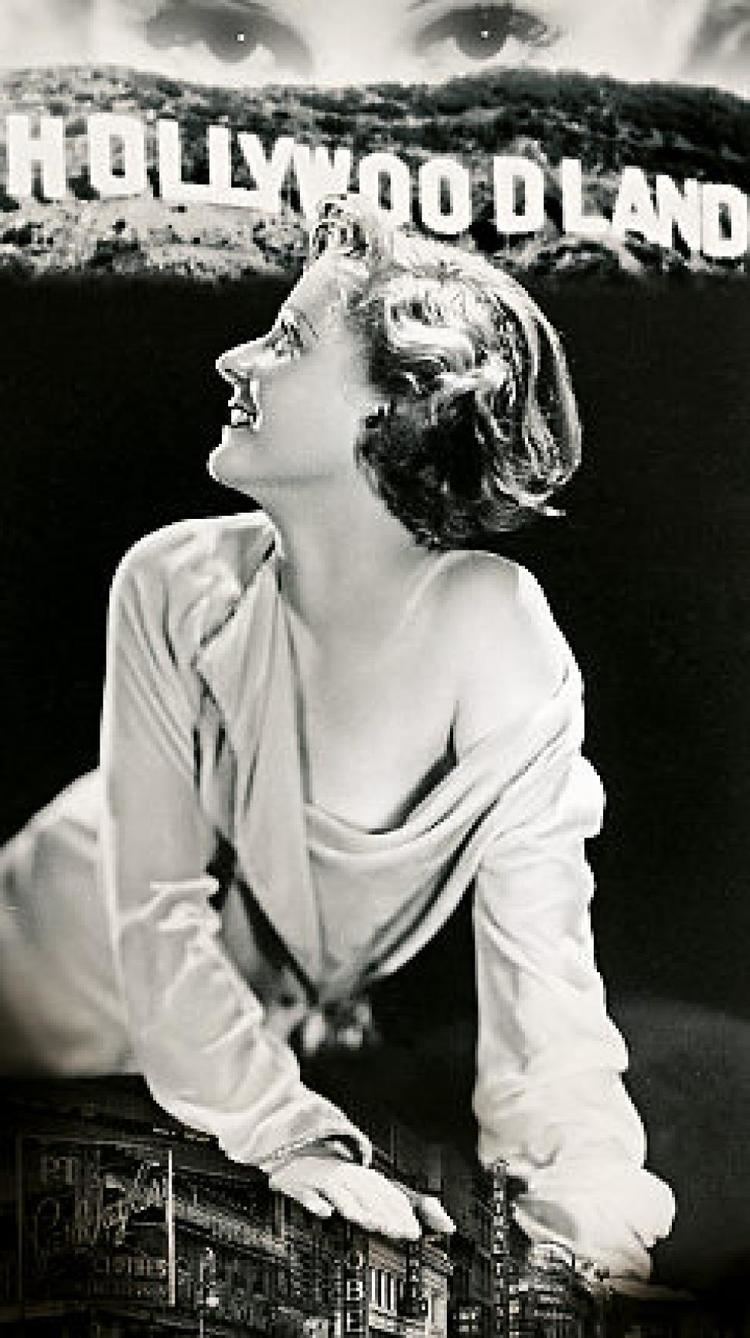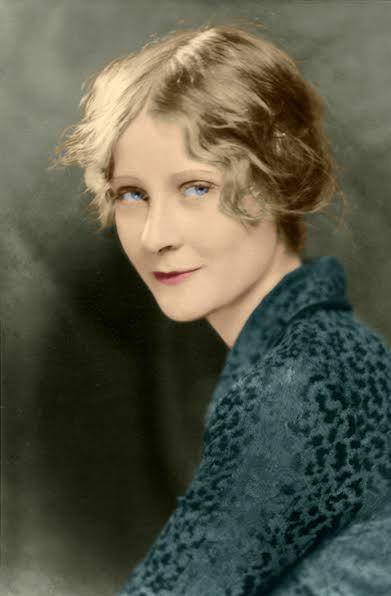Years active 1925–1932 Occupation Actress Movies Thirteen Women | Nationality British Role Actress Resting place Oak Hill Cemetery Name Peg Entwistle | |
 | ||
Full Name Millicent Lilian Entwistle Died September 16, 1932, Hollywood, California, United States Similar People Robert Keith, Brian Keith, George Archainbaud | ||
Parents Robert Symes, Emily Symes | ||
Peg entwistle biography montage
Millicent Lilian "Peg" Entwistle (February 5, 1908 – September 16, 1932) was a Welsh-born English stage and screen actress. Entwistle began her stage career in 1925, appearing in several Broadway productions. She appeared in only one film, Thirteen Women, which was released after her death.
Contents
- Peg entwistle biography montage
- Peg entwistle the life and death of an actress trailer
- Early life
- Broadway
- Hollywood
- Death
- In popular culture
- Filmography
- References

Entwistle gained notoriety after she jumped to her death from the "H" on the Hollywoodland sign in September 1932, at the age of 24.

Peg entwistle the life and death of an actress trailer
Early life

Born Millicent Lilian Entwistle in Port Talbot, Glamorgan, Wales, to English parents Emily Entwistle (née Stevenson) and Robert Symes Entwistle, she spent her early life in West Kensington, London. It is often reported that her mother died when she was very young, but there is no documented evidence supporting this. There is, however, a Last Will and Testament dated 15 December 1922, in the Entwistle family archives, in which Robert Entwistle specifically stated that

Millicent Lilian Entwistle is the daughter of my first wife whom I divorced and the custody of my said daughter was awarded to me. I do not desire my said daughter to be at any time in the custody or control of her said mother.

Peg Entwistle reportedly emigrated to America via Liverpool aboard the SS Philadelphia and settled in New York City. However, documents and photographs made available by the Entwistle family for a biography show state that Entwistle and her father were in Cincinnati, Ohio and New York City, in early spring 1913. This information is also backed up in the Internet Broadway Database, and The New York Times, where Robert S. Entwistle is listed in the cast of several plays in 1913.

In December 1922, Robert Entwistle died, the victim of a hit-and-run motorist on Park Avenue and 72nd Street in New York City. Peg and her two younger half-brothers were taken in by their uncle, who had come with them to New York and was the manager of Broadway actor Walter Hampden.
Broadway
By 1925, Entwistle was living in Boston as a student of Henry Jewett's Repertory (now called the Huntington Theatre) and was one of the Henry Jewett Players, who were gaining national attention. Walter Hampden gave Entwistle an uncredited walk-on part in his Broadway production of Hamlet which starred Ethel Barrymore. She carried the King's train and brought in the poison-cup.

Entwistle later played the role of "Hedvig" in Henrik Ibsen's The Wild Duck. After seeing the play, Bette Davis told her mother, "...I want to be exactly like Peg Entwistle." Some years later Broadway director Blanche Yurka sent a note to Davis asking if she would like to play Hedvig and she sent word back that ever since she had seen Entwistle in The Wild Duck, she knew she would someday play Hedvig. Through the years Davis said Entwistle was her inspiration to take up acting.
By 1926 Entwistle had been recruited by the New York Theatre Guild and her first credited Broadway performance was in June of that year, as "Martha" in The Man from Toronto, which opened at the Selywn Theatre and ran for 28 performances. Entwistle performed in ten Broadway plays as a member of the Theatre Guild between 1926 and 1932, working with noted actors such as George M. Cohan, William Gillette, Robert Cummings, Dorothy Gish, Hugh Sinclair, Henry Travers and Laurette Taylor. Her longest-running play was the 1927 hit Tommy in which she starred with Sidney Toler, which ran for 232 performances and became the play for which she was most remembered.
In April 1927 Entwistle married actor Robert Keith at the chapel of the New York City Clerk's office. She was granted a divorce in May 1929. Along with charges of cruelty, she claimed her husband did not tell her he had been married before and was the father of a six-year-old boy, Brian Keith (who later became an actor and who himself committed suicide).
The play The Uninvited Guest closed after only seven performances in September 1927; however, New York Times critic J. Brooks Atkinson wrote, "...Peg Entwistle gave a performance considerably better than the play warranted."
She went on tour with the Theatre Guild between Broadway productions. Changing characters every week, Entwistle garnered some publicity, such as an article in the Sunday edition of the New York Times in 1927 and another in the Oakland Tribune two years later.
Aside from a part in the suspense drama Sherlock Holmes and the Strange Case of Miss Faulkner and her desire to play more-challenging roles, Entwistle was often cast as a comedian, most often the attractive, good-hearted ingénue. In 1929 she told a reporter:
"I would rather play roles that carry conviction. Maybe it is because they are the easiest and yet the hardest things for me to do. To play any kind of an emotional scene I must work up to a certain pitch. If I reach this in my first word, the rest of the words and lines take care of themselves. But if I fail, I have to build up the balance of the speeches, and in doing this the whole characterisation falls flat. I feel that I am cheating myself. I don't know whether other actresses get this same reaction or not, but it does worry me."
In early 1932 Entwistle made her last Broadway appearance, in J. M. Barrie's Alice Sit-by-the-Fire, which also starred Laurette Taylor, whose alcoholism led to two missed evening performances and refunds to ticket-holders. The show was cancelled and in the aftermath Entwistle and the other players were given only a week's salary, rather than a percentage of the box office gross which had been agreed upon before the show opened.
Hollywood
By May 1932, at the height of the Great Depression, Entwistle was in Los Angeles with a role in the Romney Brent play The Mad Hopes starring Billie Burke, which ran from 23 May to 4 June at the Belasco Theatre in downtown Los Angeles. Theatre critic Flo Lawrence commented:
"...Belasco and Curran have staged the new play most effectively and have endowed this Romney Brent opus with every distinction of cast and direction. (producer) Bela Blau ... has developed the comedy to its highest points. Costumes and settings are of delightful quality, and every detail makes the production one entirely fit for its translation to the New York stage. In the cast Peg Entwistle and Humphrey Bogart hold first place in supporting the star (Billie Burke) and both give fine, serious performances. Miss Entwistle as the earnest, young daughter (Geneva Hope) of a vague mother and presents a charming picture of youth..."
After The Mad Hopes closed, Entwistle found her first and only credited film role for Radio Pictures (later RKO). Thirteen Women stars Myrna Loy and Irene Dunne in a pre-Hays code, high-budget thriller produced by David O. Selznick and drawn from the novel by Tiffany Thayer. Entwistle played a small supporting role as Hazel Cousins. It premiered on 14 October 1932, a month after her death, at the Roxy Theatre in New York City and was released in Los Angeles on 11 November to neither critical nor commercial success. By the time it was re-released in 1935, 14 minutes had been cut from the film's original 73 minute running length. In 2008 Variety magazine cited Thirteen Women as one of the earliest "female ensemble" films.
Death
On September 18, 1932, a woman was hiking below the Hollywoodland sign, when she found a female shoe, purse and jacket that, unbeknown to her, belonged to Entwistle. She opened the purse and found a suicide note, after which she looked down the mountain and saw the body below. The woman reported her findings to the Los Angeles police and laid the items on the steps of the Hollywood police station.
Later, a detective and two radio car officers found the body in a ravine below the sign. Entwistle remained unidentified until her uncle, with whom she had been living in the Beachwood Canyon area, identified her remains. He connected her two day absence with the description and the initials "P.E.," written on the suicide note, which had been published in the newspapers. He said that on Friday, September 16, she had told him she was going for a walk to a drugstore and see some friends. The police surmised that instead she made her way to the nearby southern slope of Mount Lee to the foot of the Hollywoodland sign, climbed a workman's ladder to the top of the "H" and jumped. The cause of death was listed by the coroner as "multiple fractures of the pelvis."
The suicide note as published read:
"I am afraid, I am a coward. I am sorry for everything. If I had done this a long time ago, it would have saved a lot of pain. P.E."
Entwistle's death brought wide and often sensationalized publicity. Her funeral was held at the W.M. Strathers Mortuary, in Hollywood, on September 20. Her body was cremated and the ashes were later sent to Glendale, Ohio, for burial next to her father in Oak Hill Cemetery, where they were interred on January 5, 1933.
In 2014, roughly 100 people marked the anniversary of Entwistle's death by gathering in the parking lot of Beachwood Market in Hollywood, to watch the film version of Thirteen Women, on an outdoor screen. Proceeds from a raffle and from food and beverages sold at the screening were donated to the American Foundation for Suicide Prevention in Entwistle's name.
In popular culture
On 16 September 2014, a public memorial honoring Peg Entwistle took place in Beachwood Canyon's HOLLYWOODLAND Village. Locals gathered near the cafe and supermarket which Entwistle used to frequent when she resided nearby in the 1920s-1930s. Hundreds of fans of the actress and Hollywood sign icon turned out to view a screening of her only film, Thirteen Women. The event was covered by national media, including the Los Angeles Times.
A musical based on the life of Peg Entwistle debuted in the UK in October 2014. The musical, Goodnight September, received positive reviews and audience feedback from its premier performances. The original musical was produced by Crazyhouse Theatre Productions and is a dramatisation of the final few weeks of her life.
On 10 October 2015, alleged sightings of Peg Entwistle's apparition at the Hollywood sign were a feature on the Travel Channel series Ghost Adventures, in the episode "Haunted Hollywood."
Entwistle's suicide was the inspiration for Dory Previn's 1972 song and album of the same name, "Mary C. Brown and the Hollywood sign."
Peg Entwistle may have also been the titular "Peg" from Steely Dan's 1977 hit.
The 2017 Lana Del Rey song "Lust for Life" is inspired by the death of Entwistle, with lyrics depicting two lovers climbing and dancing on the "H" of the Hollywood sign, the same spot from which Entwistle jumped.
